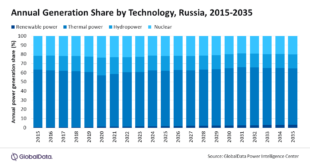Dr Paolo Eusebi gives his top tips for answering healthcare research questions using systematic reviews and meta-analyses
We currently produce 2.5 quintillion bytes of data each day, according to data specialist DOMO.
It’s easy to get overwhelmed by the vast amount of information available, especially when forming conclusions from healthcare data.
Data from many different research studies should be analysed to answer a research question about a healthcare intervention or a diagnostic technique.
However, it is not easy to compare individual studies due to the use of different variables and methodologies.

A systematic review and meta-analysis make it possible to identify, critically evaluate and integrate all data that is relevant to a research question and form a conclusion.
Once you have established a clear hypothesis and research question, you must perform a systematic literature search to collect relevant data to help you answer the research question.
The criteria for inclusion and exclusion should be objective — you should consider whether each study is of sufficient quality to be included in the review and check each for risk of bias.
Use an automated citation manager, such as EndNote or Mendeley, to extract the records from the literature search results. Extract data from the manuscript with a pre-defined form.
You can then perform a meta-analysis on the data, which will give you an answer to the research question. The final stage is to present your findings and write them up in a research paper.
Systematic reviews and meta-analyses are not simple to conduct and there are key challenges that you should be aware of before you begin.
Start how you mean to go on
It’s important that your hypothesis and research question are formulated in a way that the answer will provide a specific, interesting and useful clinical message.
For example, it may be designed to find out if a diagnostic technique would be effective for diagnosing a specific disease at a certain point along the diagnosis pathway.
The Population, Intervention, Comparison and Outcome (PICO) model will help you to ensure your research question contains all the required elements for a successful systematic review and meta-analysis.
You should define the characteristics of your patient population, including factors such as the condition or disease, age and gender. You should also specify the intervention or diagnostic technique that you want to find out about.
Decide whether you will compare the intervention or diagnostic technique to a placebo or an alternative method and finally, outline the outcomes you will analyse, such as efficacy, adverse events or morbidity.
Make time
To make sure you complete your systematic review and meta-analysis as productively and efficiently as possible, my top tip is to make use of automated tools.
For example, EndNote also allows you to collect bibliographic records into a single Excel file. The use of automated technology means the process is repeatable, so you can add new data to the Excel file at regular intervals, ensuring your data set remains up to date.
RevMan, provided by Cochrane Collaboration, is another useful tool that automates the systematic review and meta-analysis workflow, ensuring consistency between data tabulation, statistical analyses and reporting.
As technology advances, the amount of data available will continue to increase, especially in the healthcare sector. It will become increasingly complex to make sense of all this data, so it is advisable to seek the help of a qualified statistician when performing systematic reviews and meta-analyses.
If you don’t have a full-time statistician in your team, post your project on an online platform for freelance scientists, like Kolabtree, to hire a contractor as and when required.
Dr Paolo Eusebi is a freelance statistician for online platform Kolabtree.
 Engineer News Network The ultimate online news and information resource for today’s engineer
Engineer News Network The ultimate online news and information resource for today’s engineer



